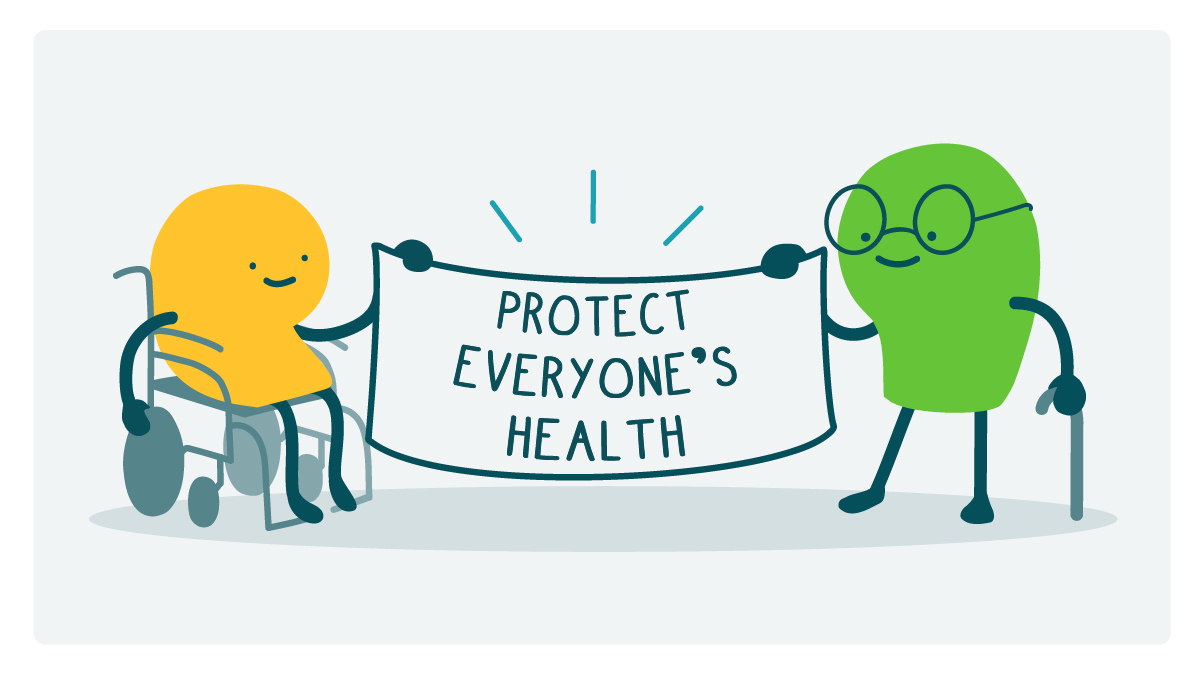
Here at We ❤️ Health Literacy HQ, we’re hearing lots of conversations about “learning to live with COVID-19.” While vaccines are working well to prevent serious illness and death, all signs point to COVID becoming endemic — meaning the virus is here to stay. So what does that mean for the way we live our lives and the guidance we share with our audiences? This is a critical question, but there’s a key audience that’s often left out of the conversation: people with disabilities and chronic health conditions.
We know that people with certain health conditions are more likely to get very sick from COVID-19. For many, COVID will be a serious health risk for the foreseeable future. Almost 2 years into the pandemic, many doctors are still telling their immunocompromised patients to stay at home, with no return to “normal life” on the horizon. Yet public health messaging often overlooks that reality — or worse, implies that the well-being of people with disabilities is less important. (See also: confusion about additional doses and/or boosters!)
Throughout the pandemic, people with disabilities and chronic health conditions have gotten the message that risking their health is the price to pay for everyone else to “get back to normal.” Sometimes that message is obvious, and sometimes it’s implied — like through policies that prioritize getting back to work and guidance that doesn’t address the needs of people with disabilities. With this context, it’s easy to understand how messaging that focuses on “learning to live with the virus” can miss the mark.
So how do we move forward? The truth is that we need to figure out how to live with COVID-19 and protect the well-being of people with disabilities and chronic health conditions. We don’t have all the answers, but a good first step is to listen to your audience. When you’re developing messages about COVID-19, invite people with disabilities to share feedback and ask about the issues that matter to them.
And speaking of feedback… we’d love to hear from you, dear readers! As we prepare for the transition from pandemic to endemic, how can health communicators better meet the needs of people with disabilities and chronic health conditions?
The bottom line: As we think about “learning to live with COVID-19,” we have to consider the needs of people with disabilities and chronic health conditions.
Browse recent posts